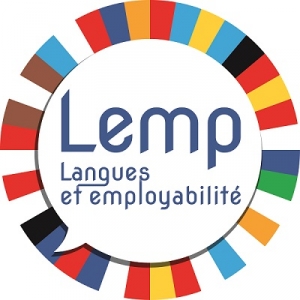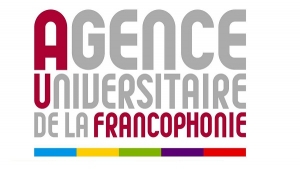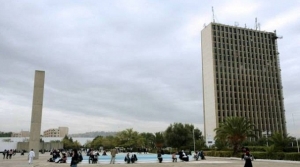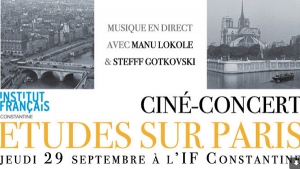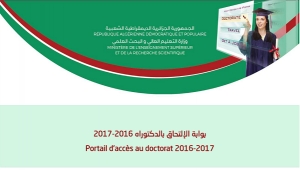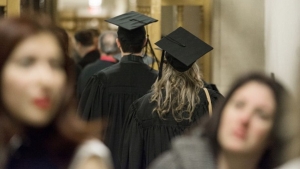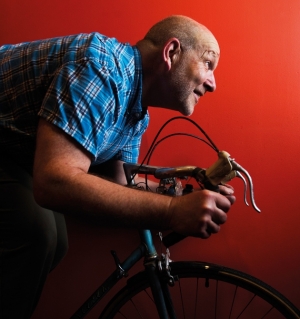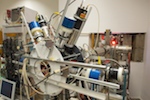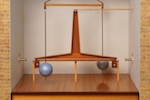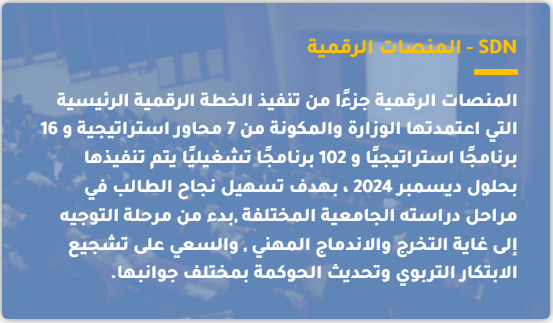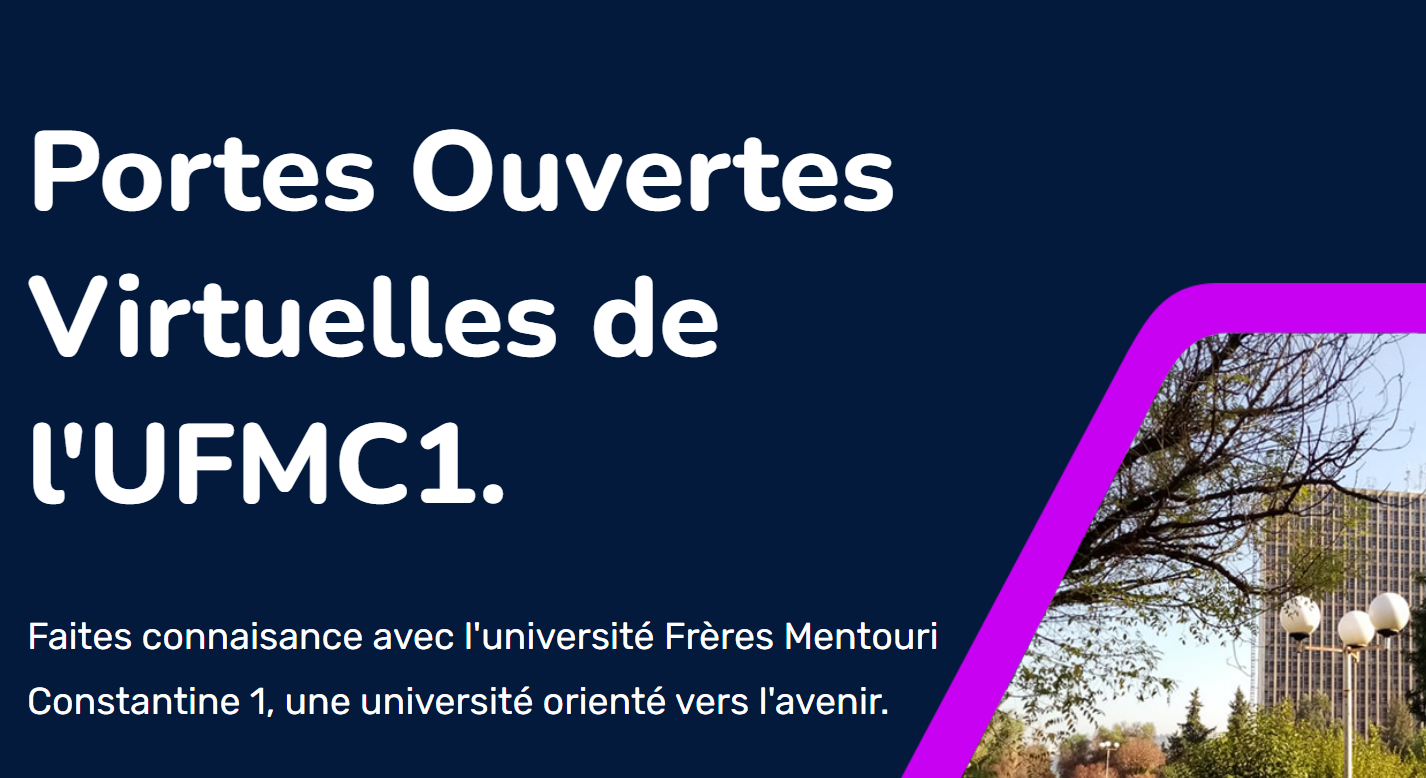إلى الطلبة المقبولين في الماستر عن بعد تخصص إدارة محلية
mad.adm.locale@umc.edu.dz
Analyse des besoins des employeurs français au regard des compétences en langues vivantes étrangères
Ce rapport d’enquête constitue l’un des principaux résultats du projet LEMP (Langues et employabilité), conduit en 2014-2015 par un consortium (Ministère de l’Éducation nationale, de l’Enseignement supérieur et de la Recherche, CIEP, Céreq-IREDU, Onisep, CCI France) et cofinancé par la Commission européenne.
À travers le recensement et l’analyse des besoins des employeurs dans le domaine des langues, les partenaires du projet ont cherché à recueillir des éléments précis sur l’enjeu des langues au regard du recrutement et de la carrière. Sur la base des résultats obtenus, un rapport d’enquêtes a été rédigé et une campagne de sensibilisation sur l’importance des langues pour l’accès à l’emploi et les opportunités de carrière sera mise en œuvre.
Une entreprise sur deux recherche une compétence en langue vivante étrangère chez les candidats lors du recrutement. À compétences égales, le critère linguistique fait la différence.
La maîtrise de deux langues étrangères est demandée dans quatre annonces sur cinq exigeant une compétence linguistique. L’entretien en langue étrangère est privilégié par les deux tiers des entreprises pour vérifier le niveau du postulant.
Si l’anglais est la première langue la plus utilisée dans les entreprises (76%),
l’allemand (39%), l’espagnol (35%) et l’italien (21%) figurent dans le quatuor de tête. La nécessité d’une plus grande diversité linguistique apparaît puisque 21 langues étrangères sont citées par les entreprises. Dans les offres d’emploi de Pôle emploi et de l’Apec avec exigence linguistique, 22 langues sont mentionnées par les employeurs.
Les langues vivantes étrangères sont essentielles pour l’employabilité
des salariés.
Dans leurs activités professionnelles, toutes les catégories socioprofessionnelles ont besoin de maîtriser des langues à l’oral comme à l’écrit.
Un tiers des entreprises indiquent leurs difficultés à recruter un postulant ayant les compétences linguistiques requises pour le poste visé.
Transferts et Orientations
- Les étudiants n'ayant pas effectué les démarches administratives de retrait de dossier et d'inscription, dans le cadre des transferts peuvent s'adresser aux établissements concernés les mardi 4, mercredi 5 et jeudi 6 octobre 2016.
- Les bacheliers titulaires d'un baccalauréat spécifique ou d'un baccalauréat étranger, ainsi que les bacheliers retardataires ayant déposé une demande d'orientation, sont également invités à finaliser leurs démarches administratives auprès de leur établissement d'accueil pendant cette même période.
Colloque 2016 "Le rôle des universités francophones dans le développement économique" (18-19/10/16 Montréal)
que jamais les universités ont un rôle majeur à jouer dans le développement global. Elles sont appelées à assumer, voire revendiquer, leur mission économique et sociale au-delà de leur rôle académique. En capitalisant et en partageant leur expertise et leurs innovations, les universités francophones, notamment celles qui sont membres de l'Agence universitaire de la Francophonie (AUF), peuvent en faire bénéficier toute la Francophonie économique.
Les universités membres de l'AUF, réparties dans plus de 100 pays, évoluent dans des contextes de développement économique, des cadres politiques et sociaux, et des types de systèmes d'enseignement très divers. Au-delà de ces différences, une problématique commune existe : l'employabilité de leurs diplômés. Ces universités partagent une même préoccupation, qui est de préparer l'insertion professionnelle de leurs étudiants pour qu'ils deviennent des acteurs du développement local, national ou international. Cette préoccupation rend le lien universités – entreprises d'autant plus important, et cela à plusieurs niveaux : la co-construction des curricula, la participation des entreprises à la formation, ou encore la structuration d'une offre de stage.
De même se pose la question de l'insertion des universités dans le tissu économique et leur impact direct et indirect sur le développement territorial. Cela concerne notamment le rôle des universités dans la formation tout au long de la vie, leur action en tant que moteur du développement économique, ou la question des incubateurs.
Un bilan doit être fait sur l'engagement actuel de l'enseignement supérieur dans le développement de la Francophonie économique. Et des recommandations peuvent être faites sur la façon dont les universités pourraient être plus actives encore pour aider au développement économique local, national et international de cette Francophonie économique.
De fait, la question économique constitue désormais une préoccupation majeure de la Francophonie institutionnelle. La «Stratégie économique pour la Francophonie », adoptée lors du XVe Sommet de la Francophonie de Dakar, veut « concilier croissance économique, lutte contre la pauvreté et les inégalités, sauvegarde de l'environnement et préservation du patrimoine culturel ». Elle vise également à « impliquer davantage les acteurs locaux du développement, de la société civile, du secteur privé et de la diaspora » (Stratégie économique pour la Francophonie, 2014, p. 2).
En cartographiant la Francophonie économique comme l'espace économique constitué par l'ensemble des pays membres et observateurs de l'OIF, cet espace, rappelons-le, représentait en 2010 14% de la population mondiale, 14% du revenu national brut (RNB) et 20% des échanges mondiaux de marchandises. À cet égard, la Francophonie économique continue à se renforcer, les pays francophones du Maghreb, d'Asie et d'Afrique ayant aujourd'hui un rythme de croissance supérieur à la moyenne mondiale mais dont les systèmes d'enseignement supérieur font face à des défis d'insertion professionnelle des diplômés toujours fondamentaux.
« La langue, c’est la monnaie des échanges humains. Si nous voulons que la langue française devienne une devise forte, faisons que nos institutions émergent comme des moteurs de développement économique, faisons que la langue soit une monnaie forte de nos échanges universitaires. »
Jean-Paul de Gaudemar
Recteur de l'Agence universitaire de la Francophonie
Le colloque organisé à Montréal les 18 et 19 octobre 2016, en partenariat avec l'Université de Montréal et l'Organisation internationale de la Francophonie (OIF), visera à répondre à ces différentes interrogations en confrontant les points de vue des universitaires et des acteurs du monde économique, autour des thèmes suivants :
-
Le rôle des universités comme moteur du développement économique
-
L'employabilité et l'insertion socioprofessionnelle des diplômés
-
Les partenariats entre les universités et les autres opérateurs du développement économique et social, publics et privés
-
La mise en place d'un réseau d'incubateurs au sein de la Francophonie, comme levier d'insertion économique des étudiants et de création de richesse pour les territoires
La particularité de ce colloque est qu'il regroupera des experts du monde économique et des universitaires venant de tous les continents. Ceci permettra une diversité des analyses qui y seront présentées et discutées.
À l'issue du colloque, des recommandations seront émises à la fois à destination des participants au XVIe Sommet de la Francophonie de Madagascar, qui aura lieu en novembre 2016, et pour les établissements d'enseignement supérieur francophones.
Pour consulter le programme complet du colloque et pour s'inscrire : www.colloqueannuel.auf.org
L'université au secours du blé
La mise en place effective du réseau «filière de blé dur» au niveau de la wilaya de Constantine a fait l'objet d'une journée d'études organisée, hier, conjointement par l'université des frères Mentouri (UMC) et la direction des Services Agricoles de la wilaya (DSA). Et à travers les ateliers qui se sont déroulés sur le campus universitaire, les participants sont sortis avec une feuille de route qu'ils compteront mettre en exécution sur le court, le moyen ou le long terme pour développer cette filière de céréales divers, en premier lieu le blé tendre. Dans ce cadre, nous ont expliqué les responsables concernés, la stratégie à mettre en place tend à booster la production de cette variété de blé en mettant en synergie le savoir-faire, les connaissances scientifiques et la technologie. M. Ghediri Yacine, directeur des Services Agricoles de la wilaya de Constantine, résume la problématique en soulignant qu'à travers ce qui a été déjà réalisé dans ce domaine au niveau du secteur agricole de la wilaya, «il est apparu qu'on peut facilement passer du simple au double dans la production du blé dur pour peu qu'on arrive à réaliser cette synergie, mettre les travaux qui ont été déjà réalisés par les services concernés du secteur de l'agriculture avec les efforts des structures de recherche de l'enseignement supérieur, et nous arriverons aux résultats escomptés». Le professeur Abdelhamid Djekoune, recteur de l'université, abondera dans le même sens en disant que «l'appoint que pourrait apporter dans ce sens l'université se situe au niveau de la recherche et de la formation. Et si l'on comprend un peu les préoccupations du secteur, nous pourrons être en mesure de développer soit du savoir-faire, soit des connaissances nouvelles, soit des technologies ou encore des programmes de recherches. Et à ce titre, l'université peut être mobilisable pour répondre aux doléances et aux préoccupations du secteur stratégique de l'agriculture».
La première communication donnée par un cadre de la direction des Services Agricoles a été axée sur l'état des lieux de la filière blé dur à Constantine, en signalant ses potentialités et les facteurs limitants. Le conférencier, M. Derghal Samir, a considéré à ce sujet que la wilaya a fait du bon chemin dans le domaine de la productivité du blé dur. «Nous sommes passés de 9 quintaux à l'hectare au début de 2001 pour arriver à produire 26 quintaux en 2016, et le travail n'est pas encore terminé. Nos objectifs de production dans le contrat de performance nous appellent à réaliser plus pour arriver à atteindre le niveau de 35 quintaux à l'hectare»
CINÉ-CONCERT : ETUDES SUR PARIS
CINÉ-CONCERT : ETUDES SUR PARIS
> Accéder au site
Agenda
Ciné-concert : Etudes sur Paris - Jeudi 29 septembre 2016 à 18h00 Gratuit sur réservation. Réservations disponibles à l'accueil de l'IF.
Lire l'évènement
Institut Français d'Algérie | Nous contacter Se désabonner Si vous ne parvenez pas à lire correctement cette newsletter, vous pouvez la consulter en ligne
Portail accés au Doctorat
http://doctorat20162017.mesrs.dz/
Une application est disponible à partir de ce lien , visant à donner des informations sur les offres de formation doctorales habilitées au titre de 2016 -2017.
PORTES OUVERTES SUR LA FORMATION DOCTORALE Le 21/09/2016
Dans la cadre de l’application de la note n°1198/SG/2016 du 07 septembre 2016, l’université les frères Mentouri Constantine1 organise, au niveau des facultés (départements) et le vice-rectorat chargé de la formation doctorale, des portes ouvertes sur la formation doctorale la journée du mercredi 21 septembre 2016 à partir de 9:00 selon le programme suivant :
. Exposition du support documentaire nécessaire,
. Présentation de toutes les informations utiles aux doctorants et nouveaux candidats.
Les textes réglementaires qui encadrent la formation doctorale 2016/2017 sont :
- ARRETE n°547 du 02/07/2016 fixant les modalités d’organisation de la formation de 3ème cycle et les conditions de préparation et de soutenance de la thèse de doctorat. ar
- ANNEXE 1(Carnet du doctorant) : CHARTE DE THESE. ar
- ANNEXE 2 : Grille de recevabilité de la demande de soutenance.
Les Formations Doctorales Habilitées à l’université les frères Mentouri par domaine et filière.
The bicycle problem that nearly broke mathematics
Jim Papadopoulos has spent a lifetime pondering the maths of bikes in motion. Now his work has found fresh momentum.
Article tools
Seven bikes lean against the wall of Jim Papadopoulos's basement in Boston, Massachusetts. Their paint is scratched, their tyres flat. The handmade frame that he got as a wedding present is coated in fine dust. “I got rid of most of my research bikes when I moved,” he says. The bicycles that he kept are those that mean something to him. “These are the ones I rode.”
Papadopoulos, who is 62, has spent much of his life fascinated by bikes, often to the exclusion of everything else. He competed in amateur races while a teenager and at university, but his obsession ran deeper. He could never ride a bike without pondering the mathematical mysteries that it contained. Chief among them: What unseen forces allow a rider to balance while pedalling? Why must one initially steer right in order to lean and turn left? And how does a bike stabilize itself when propelled without a rider?
He studied these questions intensely as a young engineer at Cornell University in Ithaca, New York. But he failed to publish most of his ideas — and eventually drifted out of academia. By the late 1990s, he was working for a company that makes the machines that manufacture toilet paper. “In the end, if no one ever finds your work, then it was pointless,” he says.
But then someone did find his work. In 2003, his old friend and collaborator from Cornell, engineer Andy Ruina, called him up. A scientist from the Netherlands, Arend Schwab, had come to his lab to resurrect the team's research on bicycle stability.
“Jim, you need to be a part of this,” Ruina told him.
Two wheels good
Together, the researchers went on to crack a century-old debate about what allows a bicycle without a rider to balance itself, publishing in Proceedings of the Royal Society1 and Science2. They have sought to inject a new level of science into the US$50-billion global cycling industry, one that has relied more on intuition and experience than on hard mathematics. Their findings could spur some much needed innovation — perhaps helping designers to create a new generation of pedal and electric bikes that are more stable and safer to ride. Insights from bicycles also have the potential to transfer to other fields, such as prosthetics and robotics.
“Everybody knows how to ride a bike, but nobody knows how we ride bikes,” says Mont Hubbard, an engineer who studies sports mechanics at the University of California, Davis. “The study of bicycles is interesting from a purely intellectual point of view, but it also has practical implications because of their ability to get people around.”
For a mechanician — that fusty breed of engineer whose subject is defined by Newton's three laws of motion — the conundrums of the bicycle hold a special allure. “We are all stuck in the nineteenth century, when there wasn't such a difference between math and physics and engineering,” says Ruina. Bicycles, he says, are “a math problem that happens to relate to something you can see”.
The first patents for the velocipede, a two-wheeled precursor to the bike, date to 1818. Bikes evolved by trial and error, and by the early twentieth century they looked much as they do today. But very few people had thought about how — and why — they work. William Rankine, a Scottish engineer who had analysed the steam engine, was the first to remark, in 1869, on the phenomenon of 'countersteering', whereby the rider can steer to the left only by first briefly torquing the handlebars to the right, allowing the bike to fall into a leftward lean.
The link between leaning and steering gives rise to the bicycle's most curious feature: the way that it can balance while coasting on its own. Give a riderless bike a shove and it may wend and wobble, but it will usually recover its forward trajectory. In 1899, English mathematician Francis Whipple derived one of the earliest and most enduring mathematical models of a bicycle, which could be used to explore this self-stability. Whipple modelled the bicycle as four rigid objects — two wheels, a frame with the rider and the front fork with handlebars — all connected by two axles and a hinge that are acted upon by gravity.
Plugging the measurements of a particular bicycle into the model revealed its path during motion, like a frame-by-frame animation. An engineer could then use a technique called eigenvalue analysis to investigate the stability of the bicycle as one might do with an aeroplane design. In 1910, relying on such an analysis, the mathematicians Felix Klein and Fritz Noether along with the theoretical physicist Arnold Sommerfeld focused on the contribution of the gyroscopic effect — the tendency of a spinning wheel to resist tilting. Push a bicycle over to the left and the rapidly spinning front wheel will turn left, potentially keeping the bicycle upright.
In April 1970, chemist and popular-science writer David Jones demolished this theory in an article for Physics Today3 in which he described riding a series of theoretically unrideable bikes. One bike that Jones built had a counter-rotating wheel on its front end that would effectively cancel out the gyroscopic effect. But he had little problem riding it hands-free.
This discovery sent him hunting for another force that could be at play. He compared a bike's front wheel to the casters on a shopping trolley, which turn to follow the direction of motion. A bicycle's front wheel can act as a caster because the point at which the wheel contacts the ground typically sits anywhere from 5 centimetres to 10 centimetres behind the steering axis (see 'What keeps a riderless bike upright?'). This distance is known as the trail. Jones discovered that a bike with too much trail was so stable that it was awkward to ride, whereas one with negative trail was a death trap and would send you tumbling the moment you released the handlebars.

When a bicycle starts to topple, he concluded, the caster effect steers the front end back under the falling weight, keeping the bicycle upright. To Jones, the caster trail was the sole explanation for a bike's self-stability. In his memoir, published 40 years later, he counted the observation as one of his great accomplishments. “I am now hailed as the father of modern bicycle theory,” he declared.
Gearing up
That article would make an impression on Jim Papadopoulos, then a teenager in Corvallis, Oregon, with a gift for numbers and a home life in tatters. In 1967, his father Michael, an applied mathematician from England, started a job at Oregon State University. But Michael Papadopoulos was denied tenure after protesting against the Vietnam War, setting off a decade-long legal battle with the university that left him out of a job and the family scouring rubbish bins for scraps. Jim's mother killed herself in the early 1970s. “Just as I was opening my eyes to the world and deciding who I was,” Papadopoulos says, “my family was falling apart.
He found solace in bikes. He pedalled his Peugeot AO8 around town and grew his hair to his shoulders. He stopped going to classes, and his grades took a tumble. At 17, he dropped out of school and left home. But before he abandoned his studies, a teacher gave him the Jones article.
Papadopoulos found it captivating but confusing. “I've got to learn this stuff,” he thought. He spent the summer bumming around Berkeley, California, reading George Arfken's textbook Mathematical Methods for Physicists in his spare time. Then, he worked at a plywood mill in Eugene, Oregon, earning enough money to buy the legendary Schwinn Paramount that he raced every weekend. In 1973, he worked for the frame builder Harry Quinn in Liverpool, UK, but he was terrible at it and Quinn asked him to leave.
Papadopoulos returned to Oregon in 1975, spent a year at the state university and then started undergraduate studies in mechanical engineering at the Massachusetts Institute of Technology (MIT) in Cambridge. He did well. Oil company Exxon later supported him as he studied for a PhD in fracture mechanics. Papadopoulos's adviser, Michael Cleary, was optimistic about his prospects as an academic. “I think Jim will become a university professor — and we certainly hope it's going to be here at MIT,” he told a writer from Exxon's in-house magazine.
Papadopoulos had other ideas. He had been studying Whipple's model and Jones's article, and one summer, an internship took him to the US Geological Survey in Menlo Park, California, where he met Andy Ruina.
The two became fast friends. When Ruina got a job at Cornell, he hired Papadopoulos as a postdoc. “We talked about bikes all the time, but I didn't realize he wanted to make a serious thing about it,” Ruina says.
Papadopoulos convinced Ruina that bicycle companies — like oil companies — might be interested in supporting academic research. So he started fund-raising, reaching out to bike makers. For $5,000, they could be benefactors of the Cornell Bicycle Research Project, an ambitious effort that would investigate everything from the strength of wheels to brake failure in the rain.
“Everybody knows how to ride a bike, but no one knows how we ride bikes.”
Papadopoulos's first goal was to finally understand what makes one bicycle more stable than another. He sat in his office and scrutinized 30 published attempts at writing the equations of motion for a bicycle. He was appalled by the “bad science”, he says. The equations were the first step towards connecting the geometry of a bicycle frame with how it handled, but each new model made little or no reference to earlier work, many were riddled with errors and they were difficult to compare. He needed to start from scratch.
After a year of work, he had what he believed to be the definitive set of equations in hand. Now it was time for them to talk back to him. “I was sitting for hours at a time, staring at the equations and trying to figure out what they implied,” he says.
He first rewrote the bicycle equations in terms of the caster trail, the crucial variable that Jones had championed. He expected to find that if the trail was negative, the bicycle would be unstable, but his calculations suggested otherwise. In a report that he prepared at the time, he sketched a bizarre bicycle with a weight jutting out in front of the handlebars. “A sufficiently forward [centre of mass] can compensate for a slightly negative trail,” he wrote. No single variable, it seemed, could account for self-stability.
This discovery meant that there was no simple rule-of-thumb that could guarantee that a bike is easy to ride. Trail could be useful. Gyroscopic effects could be useful. Centre of mass could be useful. For Papadopoulos, this was revelatory. The earliest frame builders had simply stumbled on a design that felt OK, and had been riding around in circles in that nook of the bicycle universe. There were untested geometries out there that could transform bike design.
The crash
After two years, Ruina could no longer support Papadopoulos. Apart from the bike manufacturer Murray, the only industry donations the two ever got were from Dahon and Moulton, makers of small-wheeled bicycles — perhaps because the bikes' unconventional designs could make them tricky to ride. Ruina joked that he should change the name to the “Folding Bicycle Research Project”. It was gallows humour.
And although Papadopoulos was making progress in the mathematics of bikes, he only published one paper related to the topic as a first author4. “I find much more joy discovering the new and working out the details and, of course, it's boring to write it up,” he says. Without money or publications, his time in bicycle research wound down. In 1989, he put his bikes into a moving van and drove west to Illinois, where his then-wife had a job. He endured a succession of teaching and industry jobs that he hated. In his spare time, he founded and moderated the Hardcore Bicycle Science e-mail list for bicycle-science nerds and helped to build a car that fitted into a few suitcases for the reality television show Junkyard Wars.
In 2001, David Wilson, an MIT engineer and inventor of one of the first modern recumbent bicycles, invited Papadopoulos to co-author the third edition of the book Bicycling Science. Papadopoulos was overwhelmed by monetary debts and responsibilities. He failed to send Wilson the first chapter, and then stopped responding to e-mails altogether. Wilson felt betrayed. “He is a rather brilliant guy,” Wilson says, but “he always had problems finishing anything”. Papadopoulos says that he did complete the work, but that it took two years longer than it should have, partly because of a stressful divorce.
Back to the bike
At Cornell, Ruina moved on. He applied the team's insights about bicycles to a new arena: robots. If bicycles could demonstrate such elegant stability without a control system, he reasoned, it might be possible to design a stripped-down walking machine that achieves the same thing. In 1998, he worked with Martijn Wisse, a graduate student of Schwab's at the Delft University of Technology in the Netherlands, to build a bipedal machine that could walk down a slight incline with no motor at all,storing energy in its swinging arms. Adding a few electronic motors generated an energy-efficient robot that could walk on level ground.
In 2002, Schwab decided to spend his sabbatical with Ruina, and they started discussing the old bicycle work. It was then that Ruina called Papadopoulos and paid for him to visit. “That was the first time I met the genius,” says Schwab.
“Once you have a robot bicycle, you can do a lot of crazy experiments.”
With more bicycles on the road than ever before, Schwab found it inconceivable that no one had published the correct set of bike equations, or applied it to bicycle design challenges. Within a year, he and Jaap Meijaard, an engineer now at the University of Twente in the Netherlands, independently derived their own equations and found complete concordance with Papadopoulos's. They presented the definitive bicycle equations at an engineering conference in South Korea, and the four collaborators published them jointly1.
The challenge now was to prove that it was more than just a mathematical finding. Schwab and a student spent a year building a self-stable bike with a very small negative trail. Looking like the offspring of a razor scooter and a see-saw, it had a weight angled out in front of the front wheel and a counter-turning wheel to cancel out gyroscopic effects. In a video of it coasting, you can see it lean and veer to the right, but then recover on its own2. The experiment proved that Papadopoulos had been right about the complex interplay of factors that make a bicycle stable or unstable.
Yet, after waiting for three decades for his discoveries to reach a wider audience, Papadopoulos can't help but feel deflated. “It did not change everything in the way that we imagined,” he says. This year's bike frames look much like last year's. “Everyone is still in the box,” he says. Nevertheless, other researchers have since been pulled into the group's orbit, creating enough momentum to launch a Bicycle and Motorcycle Dynamics conference in 2010. It gathers together tinkerers from all over the world, some of whom have also built weird experimental bicycles to test design principles.
One of the organizers of this year's conference, engineer Jason Moore of the University of California, Davis, has sought to probe the link between a bicycle frame's geometry and an objective measure of handling — its ease of control5. The work was inspired by extensive military research on aircraft pilots. Moore created a model of human control by performing various manoeuvres on bikes kitted out with sensors to monitor his steering, lean and speed. To force himself to balance and ride using steering movements alone (rather than shifting his weight), he had to don a rigid upper-body harness that bound him to the bike. The research confirmed the long-standing assumption that more stable bikes handle better, and potentially gives frame builders a tool to optimize their designs.
It also introduced a puzzle: the steering torque required was two or three times that predicted by the Whipple bicycle model6. This might have been caused by friction and flexing of the tyres, which are not part of the model, but no one is certain. For further tests, Moore and his colleagues have built a robotic bike that can balance itself. “Once you have a robot bicycle, you can do a lot of crazy experiments without having to put a human in danger,” he says. (One of his earlier handling experiments had him regaining his balance after a sideways blow from a wooden stick.) Unlike many other riderless-bike robots, it does not use internal gyroscopes to stay upright, but depends on steering alone. Moore has shipped it to Schwab for further study.
Today, Schwab has the kind of laboratory that Papadopoulos always dreamed of, and Papadopoulos is grateful to be able to collaborate. “It's the most beautiful thing you can imagine,” he says. Schwab's other projects include a 'steer by wire' bike, which allows him to separate steering movements from balancing ones, and a 'steer assist' bicycle, which stabilizes itself at slow speeds. He has also identified a rear-steered recumbent bike that shows self-stability, in part owing to an enlarged front wheel that boosts gyroscopic effects. The chief advantage of a rear-steered recumbent is that it would have a shorter chain than standard recumbents, which should lead to better energy transfer. “People have tried to build them before, but they were unrideable,” Schwab says.
Papadopoulos, who now has a teaching position at Northeastern University in Boston, is trying to get comfortable with academia once again. He's establishing collaborations, and testing out long-dormant ideas about why some bicycles wobble at high speed7. He believes he can eliminate speed wobble with a damper to soak up vibrations in the seat post. With his new colleagues and students, he is branching out into other types of question, not all them bike-related.
Down in his basement, Papadopoulos opens the drawer of a tan filing cabinet and starts flipping through crinkled manila folders marked with labels such as 'tire pressure', 'biomechanics' and 'Cornell'. He pulls out a textbook. “Exercise physiology? I never really got into that one,” he says, tossing it aside. In the back of the drawer, he finds a thick folder of bicycle research ideas, marked 'Unfinished'.
Papadopoulos thinks for a second and then offers a correction: “Mostly unfinished.”



